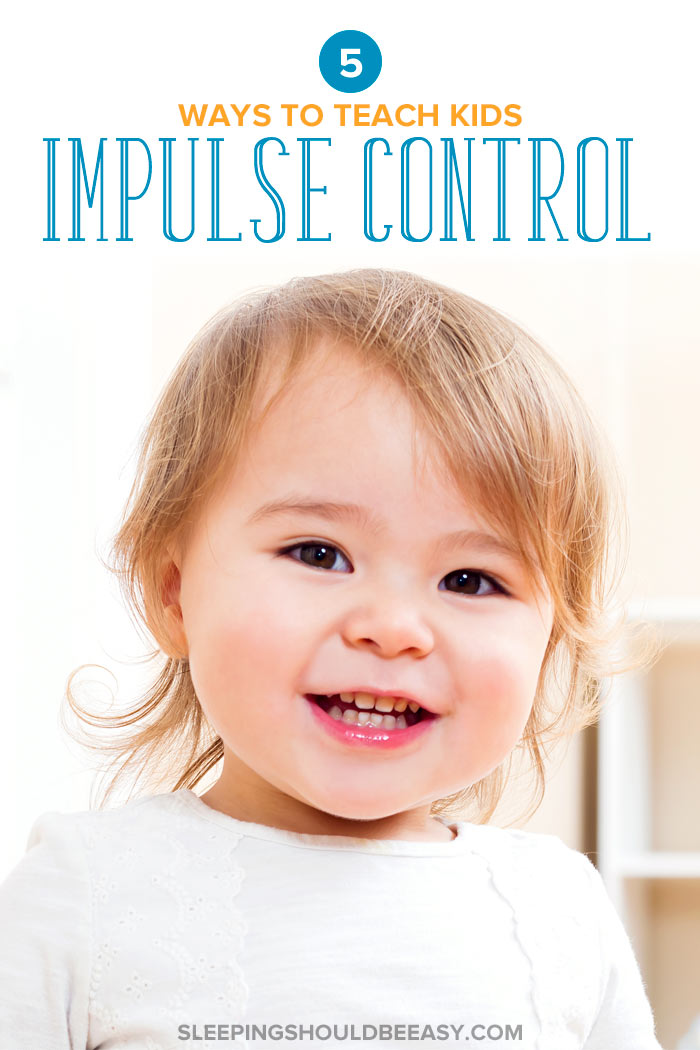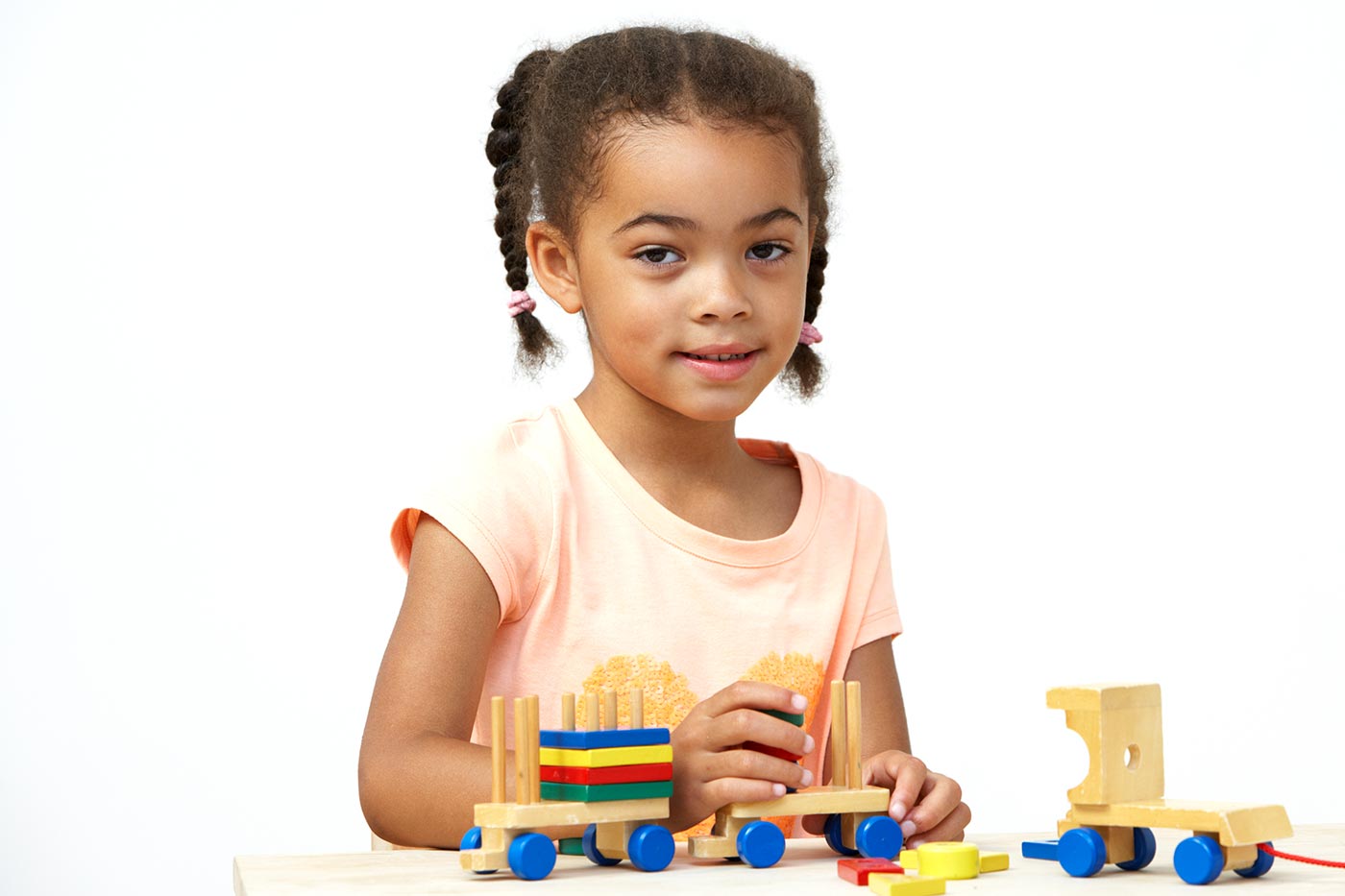5 Ways to Teach Impulse Control for Kids
Do you wish your child would think before acting more often? Learn how to teach impulse control for kids with these 5 useful tools.
 Wondering what age kids typically stop to think before acting?
Wondering what age kids typically stop to think before acting?
Perhaps your child grabs toys from other kids or pushes them for no reason. She doesn’t think twice about touching something hot or dirty and she can’t stay away from items you keep telling her not to touch.
The confusing part? She says “sorry” right away and knows that what she did was wrong. How can you teach her to think first, and then act?
We all want our kids to learn how to control their impulses. No one wants their child to be “the bully” among peers who can’t keep her hands to herself. It’s also exhausting to say “no” over and over, or to have to police her just to make sure she’s behaving.
Disclosure: This article contains affiliate links. As an Amazon Associate, I earn from qualifying purchases.
Experts also say that impulse control in kids affects how they fare as adults. As Harvard professor Robert D. Putnam shares in his book, Our Kids: The American Dream in Crisis:
“Intellectual and socioemotional development are inextricably intertwined from an early age. Research has shown that so-called noncognitive skills (grit, social sensitivity, optimism, self-control, conscientiousness, emotional stability) are very important for life success. They can lead to greater physical health, school success, college enrollment, employment, and lifetime earnings…”
In other words, impulse control isn’t just to get kids to behave but has long-lasting effects in their adult lives as well.
Ready to get started on how to develop this important skill now? Below are a few useful tools and strategies to try that I’ve applied with my own kids. They’re good to practice and can make a huge difference in helping your child develop impulse control:
Table of Contents
1. Have your child re-do the activity correctly
After brushing their teeth, I had my twins open the medicine cabinet and return their rinsing cups. My pet peeve, however, was when, after putting their cups away, they’d slam the cabinet door really hard.
For a while, I kept explaining how doing so could break the mirror, or that it’s simply not the right way to take care of our things. But my words didn’t make a difference—like a habit, they would continue to slam the door shut.
So, I took a different tactic: instead of explaining or reminding them not to do it again, I had them re-do it correctly. I’d open the cabinet door and ask them to close it again, but this time, gently.
You can use this technique for everything you nag your child about, from putting his pajamas away to speaking to his siblings more politely.
Many of the aggravating things you wish he would think more about before acting can lessen. New habits can replace his old ones, especially after having done it the right way many times. Then, praise him for his good behavior so he knows this is the type that you encourage.
You see, our brains need to relearn a different way to do an action—we’re replacing our old habits with new ones. Not only that, but we need constant repetition to get the message through.
Free resource: Do you struggle with getting him to listen? Join my newsletter and discover the one effective word to get him to listen and follow instructions. Grab your PDF below—at no cost to you:
2. Use natural consequences
Do you threaten your child with consequences, hoping he can finally start thinking about his behavior before acting on them? If he writes on the wall with crayons, you might tell him he can’t watch his favorite TV show tonight to really drive the point home.
We tend to do this, especially since we often threaten them with something we know they’ll be devastated to hear. After all, sometimes it feels like we need to go to extremes just to get them to listen.
More than likely, he’ll feel sorry, but begrudgingly, without any true lessons learned. He’s driven to behave by fear of punishment, rather than using this opportunity to learn a more appropriate way to color.
A more effective response? Stick to natural consequences that tie to his behavior.
Yes, you know he’ll stop and listen if you don’t let him watch his favorite TV show. But he can make better decisions when he can tie his behavior to a natural consequence.
Maybe that means he now needs to wash the crayons off the walls so he knows it’s not the best place to color. Grabbing a toy from his sister’s hands might mean he can’t play with that toy for the rest of the day. Not being careful around the kitchen means he has to stay in the living room while you finish up dinner.
Get more tips about how to follow through with consequences.

3. Prevent impulsive behavior
Do you ever feel like you tell your child “no” all day long? You’re practically watching her like a hawk, ready tell her not to do something.
But rather than fixing what’s wrong, prevent these situations from happening at all. What can you do to keep her from having to control her impulses in the first place?
Instead of telling her not to touch breakables or harmful items, move them out of reach so she’s not even tempted.
Prevention can even be as simple as making sure you’re meeting her basic needs. A hungry, tired child who needs your attention is less likely to think about her actions than if she was fed and well-rested.
Get more tips on how to stop telling your child no too often.

4. Adjust your expectations
As much as we know how different kids are wired, it’s also just as easy to forget that they don’t think and behave the way you and I do. If other adults were as challenging as kids can be, we’d definitely think they were bonkers!
The thing is, kids are curious and drawn to explore. Their brains haven’t developed to make reasonable decisions yet and are instead led by emotions. It’s normal for them to act first without thinking through the consequences of their behavior.
Not to say that this is ideal, but understanding this gap and where they’re coming from helps us be more patient and empathetic.
Try not to get too frustrated when it feels like you need to keep repeating yourself (remember, repetition works and helps to rewire old habits into new ones!).
Learn how to teach delayed gratification.

5. Teach social skills
Sometimes it feels like nothing we say registers with our kids. But it’s not always enough to just tell them what to do or not do. Some of these words and phrases can even seem foreign to them, like “think before you act.”
Instead, teach social skills they can understand and practice. A few ideas include:
- Personal space: Be specific about what’s okay and not okay with respecting other people’s personal space. You might explain that we keep our hands to ourselves, or that it’s okay to hug if the other person wants to hug as well.
- Turn-taking: You might explain that when one person is done, then it can be the person’s turn so that everyone gets a try.
- Using our words: Does he react when he feels wronged? Share the power of using our words, giving clear examples of what he can say, like “I’m mad.” You can even have him repeat those words so he can practice right on the spot.
- Play games: Playing games like Simon Says, Freeze Dance, and Red Light, Green Light is a fun way to teach impulse control (with the reward of having lots of fun, too!). A tower-building game like Jenga can also teach restraint and develop the skill of self-control.
Conclusion
No parent wants to see her child struggle with impulse control, much less feel like she has to police his every move. But as you can see, you can take actionable steps to help yours better manage his behavior and thinking process.
Simple tactics like having him re-do the activity a better way or teaching social skills can help him remember what to do next time. Give natural consequences that tie to his behavior so he can see the results of his choices.
Prevent misbehaviors by lessening the chances they even happen. And finally, adjust your expectations and remember that his brain is still growing and wired differently than adults.
With these tips, he can better develop impulse control—even if it means having him close the medicine cabinet more gently this time.
p.s. Check out What Were You Thinking? by Bryan Smith, all about learning to control impulses:
Get more tips:
- 5 Things to Remember When You’re Losing Your Temper with Your Toddler
- 8 Life Skills Kids Need in Adulthood
- How to Get Your Child to Stop Talking in Class So Much
- How to Respond When Kids Make Mistakes
Don’t forget: Join my newsletter and grab One Effective Word to Get Kids to Listen—at no cost to you:


